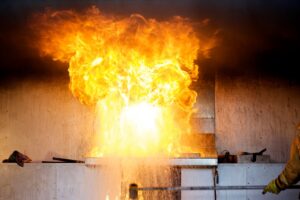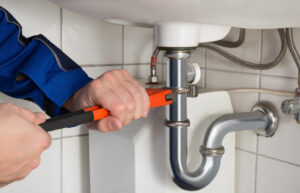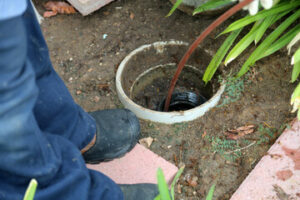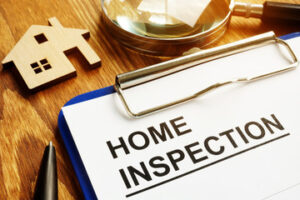Many common appliances in your home use gas, such as your dryer, furnace, fireplace, stove and water heater. Over time, seals and pipes can break down causing leaks.

The first sign of Gas Leaks NYC are often a foul odor, reminiscent of rotten eggs. Other signs include a hissing sound or bubbles in standing water. Evacuate the area immediately and call 911 and your utility company.
A gas leak can be a serious danger for you and your family. It can cause fires, explosions, and even poisoning. To avoid these problems, it is important to know the symptoms of a leak. You should also understand how to recognize them so that you can call a professional right away.
One of the most common symptoms of a leak is an unpleasant odor. This is because natural gas has no odor and utility companies add a smelly substance to it in order to alert customers when it is leaking. This odor is similar to rotten eggs and is usually very noticeable. Another sign of a leak is a hissing sound coming from your home’s pipes. When you hear this noise, it is important to stay calm and not touch any of the pipes. This is because if you do, you could create a spark that will ignite the gas and cause an explosion or fire.
Other signs of a leak include wilted houseplants and yellowish patches in the grass. This is because gas leaks into the ground and prevents plants from absorbing oxygen.
If you notice any of these signs, evacuate your home immediately. Call the emergency number for your utility company from a safe location outside of your home. Never use the phone inside your home, as this can create a spark and ignite the gas. Also, make sure that all members of your family and any pets are evacuated as well.
Symptoms of a gas leak can also include headaches, dizziness, nausea, and fatigue. This is because the gas is restricting the amount of oxygen and air that is getting into your body. It is also possible for carbon monoxide to be emitted from the leak and this can be very dangerous.
You should also look for any damage to your home’s gas lines and appliances. If you see any damage, it is very important to have a professional come and inspect your home. A damaged line can lead to a gas leak and you should have it repaired as soon as possible. It is also a good idea to have the lines around your property clearly marked so that you can find them in case of an emergency.
Detection
Detecting a gas leak early can prevent damage, fires and other issues that can lead to costly repairs and health problems. A number of tools and methods are available for detecting these dangerous leaks.
Some of the more common signs include hissing sounds, white dust clouds in the air and a sulphuric smell (like that of rotten eggs). While natural gas is odorless, many providers add a strong additive to it called mercaptan, which gives it a sulphuric or rotten egg odor so that homeowners can recognize it when it escapes from pipes or appliances.
Other signs include wilting plants, visible damage to the gas line connection and air bubbles in water, such as in the toilet. Finally, the leaking gases can cause corrosion in your plumbing which will make it look like there are holes or cracks in the walls.
Using a professional gas detector is the most effective way to find the source of a leak and have it repaired as quickly as possible. A variety of devices are available for this purpose, ranging from simple electronic sniffers to highly sophisticated models that work in harsh environments, such as a petroleum refinery or a gas turbine plant.
Regardless of the type of device used, it is always recommended that individuals practice regular maintenance on their appliances and perform routine tests in areas where gas lines are located. This is the best way to ensure a home is protected from dangerous leaks and to keep everyone safe in the event of an accident or emergency. A routine inspection by a professional can also help identify potential problems before they become serious. Homeowners can also add a basic test to their routine by painting a mixture of soap and water over the suspected area of a leak. If there are pin-hole leaks in the pipe, bubbles will form over these areas. This is a simple and inexpensive method for finding a gas leak, and it can save a lot of time and money in the long run. Once the leak has been fixed, it is important to use the same testing method to be sure it was actually fixed and that there are no other leaks on the piping system.
Evacuation
When a gas leak occurs, it is important to evacuate the affected area immediately. This reduces the risk of injury or harmful gas exposure and allows emergency response teams to address the incident promptly. It is also essential to avoid ignition sources such as open flames, smoking and electrical sparks, as even a small spark in the presence of leaked natural gas can cause an explosion.
During an evacuation, it is recommended that people stay upwind and away from leaking equipment. Also, individuals should not search for the source of the leak as this may expose them to hazardous levels of gas and increase the likelihood of exposure.
In the event of a gas leak, individuals should evacuate the building and should not return until authorized by emergency response personnel. This will allow them to assess the situation, address the leak and ensure it is safe before allowing anyone to reenter the building or outdoor area.
Gas leaks can lead to fires, carbon monoxide poisoning and even asphyxiation. In the case of carbon monoxide, it is caused by incomplete combustion and can be fatal in high concentrations. Asphyxiation is commonly caused by gas leaks in confined spaces, where the gas can displace oxygen.
It is essential to follow the evacuation procedures recommended by your gas service provider or emergency services, as these may vary depending on local regulations and the type of natural gas system in use. Evacuation procedures should include the identification of assembly points, evacuation routes and exits.
When a gas leak is detected, individuals should immediately report the incident to their gas service provider or emergency services. This will allow them to dispatch a crew quickly and minimize the risk of an accident or an uncontrolled explosion.
If a leak is suspected, it is best to report the incident to PSE&G as soon as possible. It is also important to remember that it is against the law to tamper with or damage a natural gas pipeline, and tampering could result in a serious accident or explosion. Please remember that all damage to underground utilities should be reported to the Call Before You Dig program by calling 811. This will help protect your community’s infrastructure and safeguard our environment.
Repair
Gas leaks are dangerous, but they can be managed and prevented with regular inspections, timely repairs and routine maintenance. The first step in repairing any leak is to ensure safety by isolating the affected area. This may involve shutting off the entire gas supply or isolating specific sections of the line depending on the severity and location of the leak. Isolating the area will prevent any further loss of gas and will help to avoid unnecessary disruptions during the repair process.
Once the gas has been isolated, professional plumbers can safely begin the repair process. This is a meticulous process that requires advanced tools and expert plumbing knowledge. A gas line repair should never be attempted by an untrained individual, as it can have deadly consequences.
A gas leak can cause a fire or explosion if it comes into contact with an open flame or spark. It can also lead to asphyxiation if the leak is concentrated and prolonged.
Other dangers of a gas leak include a buildup of carbon monoxide in the atmosphere, which can be fatal. Carbon monoxide is odorless and colorless, so it is difficult to detect without the aid of carbon monoxide detectors.
In addition to the immediate risks associated with a gas leak, it is important to consider the environmental impact of these leaks as well. Natural gas is a fossil fuel, and leaks from pipes can add to the CO2 emissions that contribute to global warming. It is therefore important that we all do our part to reduce the number of gas leaks and ensure the integrity of all pipe infrastructure.
To minimize the risk of a gas leak, it is essential that homeowners regularly inspect their appliances and pipelines. Look for any signs of damage or deterioration and make sure all connections are tight. In addition, be sure to keep all chemicals, paints and cleaning supplies well away from gas lines and appliances. Store them in a separate, well-ventilated space and go through them periodically to ensure that they are not expired or contaminated. Finally, if you suspect that there is a gas leak in your home, don’t try to identify the source yourself by searching for the rotten egg smell or other symptoms; instead evacuate the area immediately and seek professional assistance.




